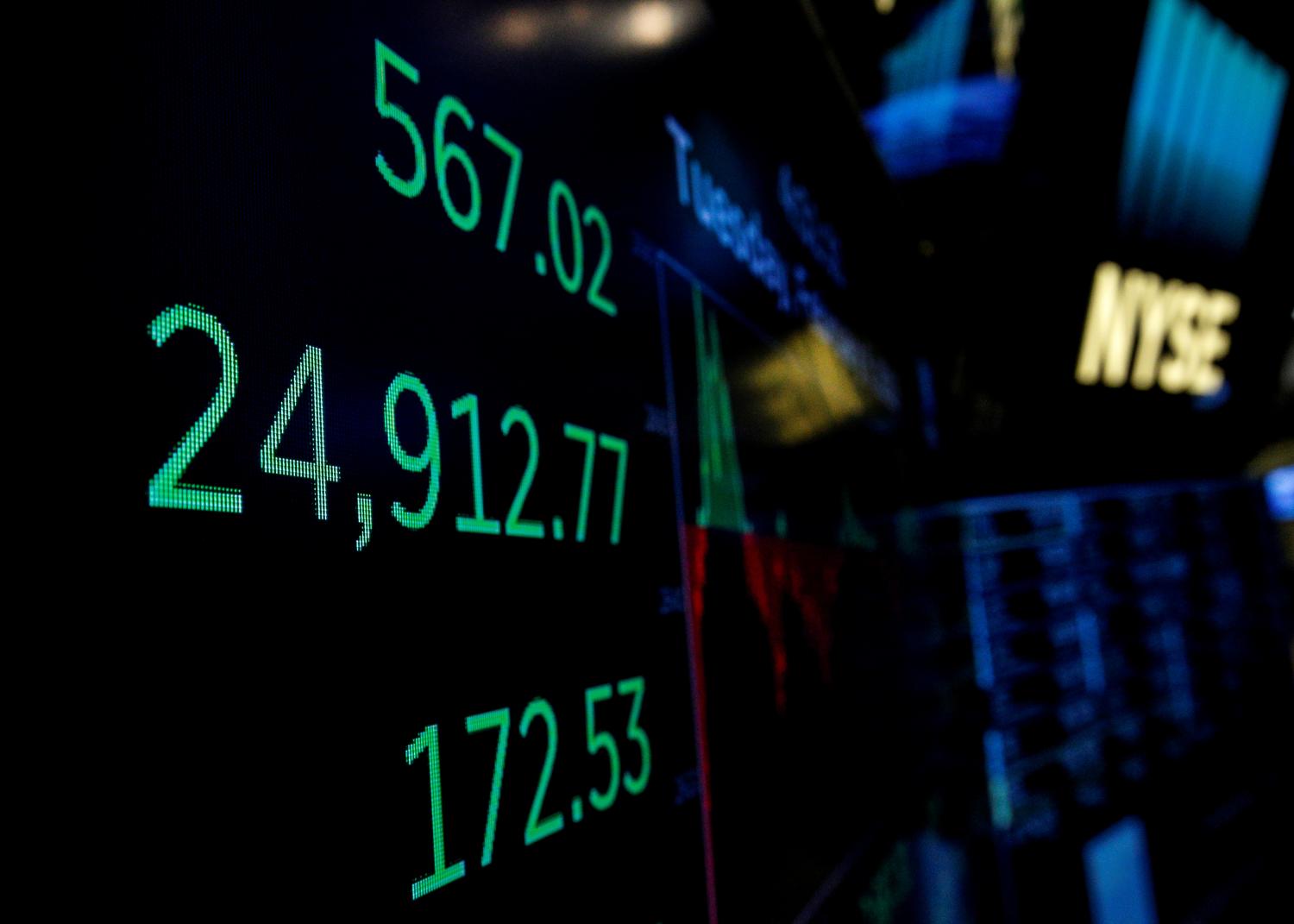This is the third in a five-part series of essays looking at whether the American project can survive. Read the rest of the essays here.
Although social and political divisions run deep, imagine how much more rancor would be churned up in a bad economy. Fortunately, at least at the “macro” level, the U.S. economy continues humming along, in its ninth year of expansion since the Great Recession of 2008-2009.
Indeed, in an unusual twist, the debate over the 2017 tax bill had many Democrats (echoed by economists) saying the economy was already at or near full employment and thus didn’t need more fiscal stimulus. Republicans countered (and won) that the tax stimulus, especially the cuts in the corporate tax rate and the full expensing of investment expenditures, would expand the productive capacity of the economy by stimulating investment, and thus leave more room for expansion.
The consensus forecast now appears to be that the economy will grow at roughly 2.5 percent this year. If investment and consumer spending respond as favorably as the tax bill’s supporters claimed, growth in the short run—this year and next—may be more rapid than that, despite the Federal Reserve’s announced plans to gradually lift short-term interest rates (although if the economy grows too fast, well above 3 percent, look for the Fed to lift rates higher and faster).
Both parties generally supported a corporate tax rate cut (our previous 35 percent rate was among the highest in the developing world) but were divided on both the amount of the cut and on the expected impact of the new 21 percent corporate tax rate. How much would companies retain, pass on to shareholders, or invest in new plant and equipment? President Obama earlier had floated a 28-percent corporate rate coupled with a general proposal to cut back unspecified corporate tax breaks.
Obama’s broad proposal never went anywhere, so we’ll never know what fiscal impact it would have had. But there is no such uncertainty about the fiscal impact of the 2017 tax bill: It will worsen the federal budget deficit, even factoring in “dynamic scoring” that counts added revenues from added growth. On the plus side, however, the lower corporate rate is expected to discourage U.S.-based companies from booking their earnings abroad or legally moving offshore.
The big question: What will be the long-run impact of “Trumponomics”?
It’s a safe bet that economists will be working for years to estimate the impact of the 2017 tax cut on–such things as investment, GDP, and the federal deficit. The most critical issue is the supply-side effect of the tax changes on the long-term or potential growth rate of the economy. The potential growth rate measures how much we can grow our economy (and thus our living standards) if we are fully using our available economic resources. From the Fed’s point of view, it acts as a kind of speed limit: the lower it is, the lower the ceiling before the Fed would need to raise interest rates to prevent inflation, Conversely, a faster potential growth rate allows more room for the economy (and incomes) to increase without high inflation.
Until recently, official forecasters had been lowering their projections of long-run growth to the 2 percent range due to a slowdown in labor force and productivity growth. The pickup in growth since early 2017 has clearly encouraged an optimistic president and his economic advisers (who are not quite as optimistic as their boss) to be more upbeat about the long run.
More specifically, the Trump team believes that if the U.S. builds on the 2017 tax cut by adding a major infrastructure plan (which for reasons outlined in my last chapter I think unlikely) and continues cutting federal regulation (more likely), economic growth will rise from the 2 percent range of the Obama years to 3 percent over the next 10 years, well outlasting a two-term Trump presidency.
Although social and political divisions run deep, imagine how much more rancor would be churned up in a bad economy.
The difference between a 2 percent and a 3 percent growth rate might not sound like much. But simple math shows that an economy growing at 2 percent takes 36 years to double in size; at 3 percent, the economy doubles in 24 years. Clearly, compound interest works its magic such that even modestly faster growth, if sustained for a long period, generates a much larger economic pie in the long run.
The research of one authoritative economist, Robert J. Gordon of Northwestern University, sheds some light on which set of projections are most likely to materialize, and, specifically, whether shifts in tax policy are likely to make that much difference. In his Rise and Fall of U.S. Growth1 Gordon provides strong arguments why labor productivity growth in the one percent-plus range (which with labor force growth of about 0.5 percent would imply total potential GDP growth of 1.5 percent) will be the new normal. Without getting into the details of a 700-page opus, one thing readers won’t find in the book is convincing evidence that the big cut in personal tax rates during the Reagan Administration lifted potential growth, or evidence that the mild increase in personal tax rates during the Clinton administration retarded potential growth.
While there is no convincing evidence that changes in personal income tax rates affect productivity growth to any significant degree, it is at least plausible that because so much of the 2017 tax reform bill was focused on lowering the corporate tax rate, the positive impacts on growth could be more sizeable than previous personal income tax cuts. This is because the lower corporate rate increases the after-tax rate of return on new investment, which in turn should make workers more productive. But it is difficult to believe that any such upward bump in labor productivity would account for the full percentage point in the GDP growth rate that the Trump team is forecasting.
Nonetheless, some academic scholars and one leading management consulting company, McKinsey Global Institute, are long-run optimists about growth for an entirely different reason unrelated to tax policy.2 These “techno-optimists” argue that increasing advances in artificial intelligence, robotics and computer power, individually and more importantly combined, will push up labor productivity growth—well above the 1.5 percent range of official forecasters like the Congressional Budget Office—absent any specific policies by the Trump or future administrations.
Yet even techno-optimists acknowledge there could be human-induced bumps in the road to higher economic growth. In the case of driverless vehicles, for example, the fear of massive job losses among truck and taxi drivers, and even among those in the auto insurance industry, coupled with many individuals’ fears of letting computers do the driving, may induce state and federal officials to slow the adoption rate of such vehicles, through regulation or legislation. And, as the McKinsey Report notes, pioneering tech firms may also slow their own rates of innovation for fear of cannibalizing their current well-selling products or services.
My own view is that the potential growth rate of the U.S. economy is likely to fall somewhere in middle between the 2 and 3 percent forecasts of CBO and the Trump administration, respectively. Admittedly, there is much uncertainty about such projections. As my colleague Martin Baily wrote last month, long-run growth under Trump’s policies could be as little at 1.3 percent to as high as 3.3 percent.
We could be much closer to the lower end of Baily’s range if, as is likely, the U.S. suffers one or more recessions in the future, or if the administration triggers a global trade war with its new “America First” trade policy. The prospect of such a war, which the President has (unwisely) encouraged and thinks we can “win” (a dubious proposition), has now been made concrete with his announcement that the U.S. will impose a 25 percent tariff on imported steel and a 10 percent duty on aluminum imports (although the administration has hinted at possible exceptions for NAFTA partners Canada and Mexico if a new NAFTA deal can be struck, a highly uncertain prospect at this writing).
The real concern is whether we’ll have the monetary polcy and fiscal policy tools to respond to the next recession, which inevitably will come. With the Fed gradually lifting interest rates, there should be some room to lower them in the future; at worst, the Fed again could resort to quantitative easing (buying bonds and essentially printing money) if cutting interest rates alone doesn’t help enough.
Fiscal stimulus in a future recession would also help mitigate its impacts, but with the debt-to-GDP ratio likely to hit 100 percent next decade, some believe that either Congress and the president won’t agree to another fiscal stimulus package, or, if they did, it wouldn’t work. I am more optimistic. Politicians of both parties rightly fear they would lose their jobs if they didn’t act. While a high pre-existing debt-to-GDP ratio may reduce the impact of a future fiscal stimulus plan, it should not neuter it.
But GDP growth isn’t everything
So far, I, like most other economists, have focused on the growth rate of the overall economy, or the GDP growth rate. But GDP has many well-known limitations.
It’s only a best estimate by government statistics of total goods and services produced in the U.S., adjusted for inflation, taking account of quality improvements. It’s also somewhat imprecise: GDP doesn’t capture the apparently “free” access to all kinds of information, good and bad, on the Internet (it’s not really free, we’re giving our personal information in the process), the value of household work by spouses not in the labor force, depletion of our natural resources, or our true state of happiness, as multiple critics of GDP have long pointed out.3
Most important, any country’s GDP does not count how it is distributed, yet we now know from multiple academic and government sources that the benefits of the growing “GDP pie” are being handed out in increasingly uneven slices, with more and more going to the highest earners and those that are already wealthy. This is not sustainable for growth, since firms can’t make ever increasing profits by selling goods and services to an ever-dwindling middle class. Nor it is sustainable for democracy. Unless people broadly benefit from inclusive growth, the masses will revolt in one fashion or another, most likely embracing some form of populism that promises easy answers to difficult problems and distrusts experts whose knowledge could help enhance inclusive growth. This, in part, explains the rise of Trump, as well as the increasing power of the more populist politicians in the Democratic party.
The challenge of realizing more inclusive growth, regardless of how fast the U.S. economy grows, is a huge one, and one what I address in the next two chapters. Unfortunately, there are also large uncertainties around what policies would best make future growth more inclusive. But that doesn’t mean we shouldn’t try, and I will do my best to identify what’s most likely to work, and what’s not.
-
Footnotes
- Robert J. Gordon, The Rise and Fall Of U.S. Growth (Princeton University Press, 2016).
- See, e.g. Erik Brynjolfsson and Andrew McAfee, The Second Machine Age: Work, Progress, and Prosperity in a Time of Brilliant Technologies (New York: W. W. Norton, 2016). See also McKinsey Global Institute, 2018: Solving the productivity puzzle: The role of demand and the promise of digitization.
- One of the pioneering studies of GDP and its shortcomings that the modern critics should not forget is the oft-cited 1972 essay discussing the concept of “Measured Economic Welfare” by Yale economists Bill Nordhaus and the late James Tobin (and also Nobel prize-winner). William Nordhaus and James Tobin, Is Growth Obsolete? (New York: Columbia University Press, 1972).






